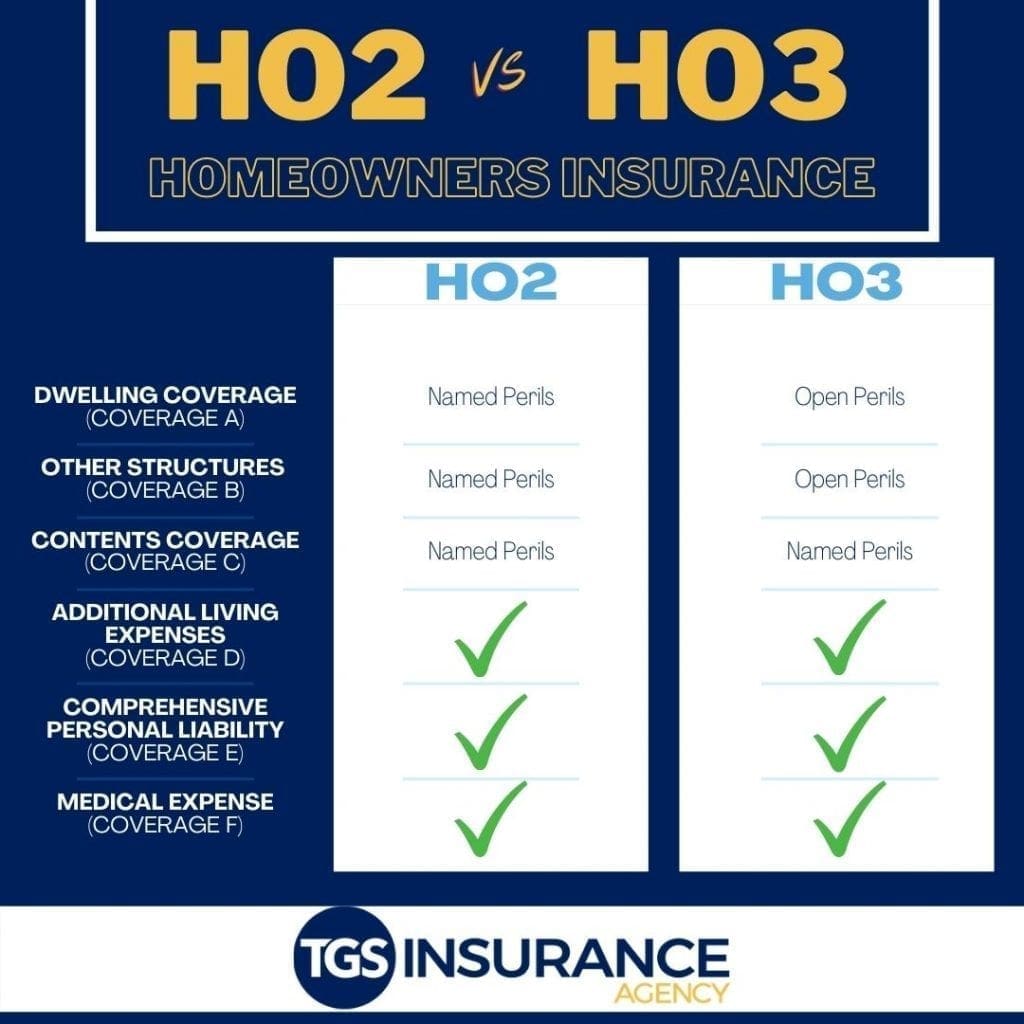
With several different types of homeowners insurance to consider, the decision as to which is the best fit for you can become quite overwhelming. Both HO2 and HO3 policies cover your home structure and personal belongings, but which is the better option for you? To help you decide which is the better fit, we will look at both options and then break down the difference between HO2 and HO3 homeowners insurance policies.
HO2 Insurance Policy Explained
An HO2 policy is a step up from HO1 in coverage because it includes more perils, but it is still considered basic coverage. The HO2 policy is a named-perils only insurance policy which means that it covers both your dwelling and personal property from damage caused by events, or perils, specifically named in your policy and nothing else. Some of the common named-perils found in an HO2 policy include:
- Theft
- Fire or Lightning
- Explosion
- Smoke
- Freezing
- Vehicles
- Falling Objects
- Volcanic Eruption
- Windstorm or Hail
- Riot or Civil Commotion
- Damage caused by Aircraft
- Vandalism or Malicious Mischief
- Weight of Ice, Snow, or Sleet
- Cracking, Bulging*
- Artificially Generated Electric Current*
- Water or Stream*
*Indicates that this peril is only covered if the damage is caused as a result of a sudden and accidental event
HO3 Insurance Policy Explained
An HO3 policy, oftentimes called special form homeowners insurance, is the most popular form of homeowners insurance written. HO3 protects your home but also additional structures, you and your family from liability/medical costs, and your possessions. Similar to the HO2 policy, your personal belongings are covered by named-perils only which means that if your policy does not specifically include a peril, you are not covered. Your home and any other covered structures, on the other hand, are written as open-perils which means that it can cover any risk, or peril, except for those specifically excluded by the policy. A list of common exclusions used in an HO3 policy include:
- Earth Movement
- Power Failure
- Nuclear Hazard
- Collapse
- Settling, Expanding
- Mold, Fungus, Rot
- Smog, Corrosion
- Ordinance/Law
- Neglect
- Intentional Loss
- Construction Theft
- Wear & Tear
- & Ind. Smoke
- Water Damage
- War
- Action
- Vandalism
- Breakdown
- Pollutant Discharge
- Owned Animals
- Birds, Vermin
The Difference Between HO2 and HO3 Homeowners Insurance Policies
The primary difference between HO2 and HO3 home insurance policies is the way your dwelling is covered. With HO2 coverage, your dwelling coverage is written as named perils which means that your home structure is only covered by perils included in your policy. On the flipside, with HO3 coverage, your dwelling coverage is written as open perils which means that unless a peril is specifically excluded, it is covered. Below is a graphic we have put together comparing the standard HO2 and HO3policy, however, it is always important to discuss the specifics with your insurance provider for your specific policy.

Get the Right Homeowners Insurance for Your Home
Still unsure of what policy is right for you? The team at TGS Insurance can help you find the right homeowners insurance policy to fit your lifestyle and offer the protection you and your family deserve. We partner with many reputable, top-rated insurance providers we are able to shop the best rates and coverage options available on the market on your behalf. You can even bundle and save more each month.
Instant Home Insurance Quote
Recent Home Insurance Articles:
- Does Home Insurance Cover Vacation Rentals? Here’s What You Need to Know
- Home Insurance Coverage Gaps You Might Not Know Exist—Until It’s Too Late
- Grilling Safety Tips for a Secure Memorial Day BBQ
- How to Change Home Insurance with Escrow: A Step-by-Step Guide
- Pool Safety Tips for Homeowners: Stay Cool and Covered This Summer